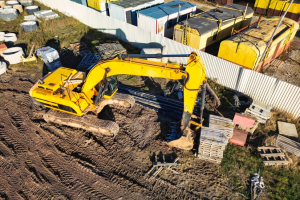How Can Hospitals And Nursing Homes Reduce Their Energy Costs

Energy efficiency is one of the most important factors in the healthcare industry. Hospitals and nursing homes use a lot of power, and they have to be careful about how much money they spend on it. But with so many different ways to save energy, you might be wondering where to start. Luckily for you, we’ve come up with some great ideas that will help your facility reduce its energy usage without sacrificing any luxuries:
Consider a Combined Heat and Power System
A Combined Heat and Power system (CHP) is a power generation method that uses heat from an exhaust process, such as from a boiler or turbine, to generate electricity and hot water.
It works by using the heat from one source—such as a boiler—to drive another process, like generating electricity. CHP systems are used in many industries because they require less fuel than standard boilers or furnaces, so they’re more efficient and cost-effective over time. A CHP can also convert any excess waste heat into usable energy instead of just wasting it into the atmosphere (like traditional systems do). This reduces your carbon footprint while saving you money.
Design a Building to be More Energy Efficient from the Beginning
The first step to reducing energy costs is to design a building that’s more energy efficient from the beginning. This means designing the most efficient HVAC system, lighting system, water heating system, and electrical system. It also means ensuring the building has the proper infrastructure in place to support efficient plumbing and wastewater management systems.
Another way you can reduce energy consumption is by installing features that make it easy for occupants to save energy.
Get an Energy Audit
An energy audit is a comprehensive examination of your facility’s energy usage. It will help you figure out how to lower your cost of operation, reduce emissions, and conserve natural resources. To get an energy audit, contact a certified professional who can conduct the inspection and provide recommendations on how to improve your facilities’ efficiency.
If you have several buildings close together, a single entity may be responsible for all of them, or one building may serve as the main source of heat or cooling for another nearby building. This makes it difficult for one company to offer services across multiple sites, so consider contacting multiple companies before deciding which one is right for you.
Use an Energy Monitoring System
An energy monitoring system, such as a building automation system or BACnet network, can be used to identify opportunities for reducing costs. The system will allow you to collect real-time data from the sensors in your facility and analyze it for trends, which can help you determine where there are problems in your energy use.
For example, if the temperature in one room is consistently higher than others (or lower), that’s an indication that there’s an issue with airflow or insulation. On the other hand, if several rooms are consistently colder than others—and they’re not located close together—that might mean a ductwork section has cracked along its length and needs repair work done on it.
Invest in More Efficient Equipment and Lightbulbs
Invest in more efficient equipment and lightbulbs. This includes LED light bulbs, which can reduce energy use by up to 85 percent compared to old-fashioned incandescent bulbs. It also means installing motors that are designed for low- or variable-speed operation, heating and cooling systems that can be controlled remotely, and lighting systems that are more efficient than traditional fluorescent lights.
Conclusion
Making these changes won’t be easy. But with the right tools and help from companies like Business Energy Comparison, they can help your hospital or nursing home reduce its energy costs and prevent future costs by making your facility more efficient.








